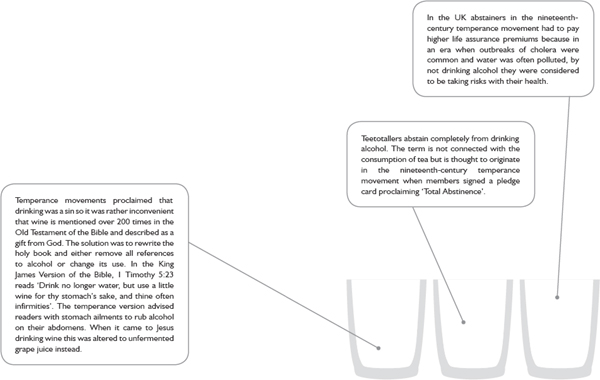
CHAPTER SIX:
THE OTHER SIDE OF THE COIN
SPEAK EASY – TEMPERANCE AND PROHIBITION
Various governments throughout history have experimented with the prohibition of alcohol, usually with little effect. The best known example of alcohol being banned where it was formerly legal is the USA, which tried the ‘Noble Experiment’ between 1919 and 1933.
Since the mid-nineteenth century American legislators had been under pressure from active temperance societies such as the Women’s Christian Temperance Union and the Anti-Saloon League. Both organisations blamed alcohol for crime, immoral behaviour and the breakdown of society. In 1841 the Washington Temperance Society published a parody of the Declaration of Independence: ‘We hold these truths to be self-evident. That all men are created temperate; that they are endowed by their creator with certain natural and innocent desires; that among these are appetites for cold water and the pursuit of happiness.’ They were not joking. But for some campaigners abstinence was not enough—an outright ban was the only course of action. They were so persuasive that the US Senate eventually ratified the Eighteenth Amendment to the Constitution in 1919, and in January 1920 the National Prohibition Act came into force.
Production of moonshine and bootlegging became rampant and there were insufficient police officers to enforce the law. Speakeasies proliferated, supplied with illegal hooch by gangsters such as Al Capone, and rumour had it also by employees of Joseph Kennedy, father of the future US President. Prohibition failed to prevent people consuming alcohol leading instead to the unintended consequences of political corruption, smuggling, deaths from adulterated booze, and a rise in organised crime.

By the time of the Great Depression it was apparent that consumption of alcohol had not decreased during Prohibition; it was costing too much to police, and the government was missing out on millions of dollars of liquor taxes. The law was repealed in 1933. However, even today there are still dozens of dry counties across the USA where the sale and purchase of alcohol is restricted.

